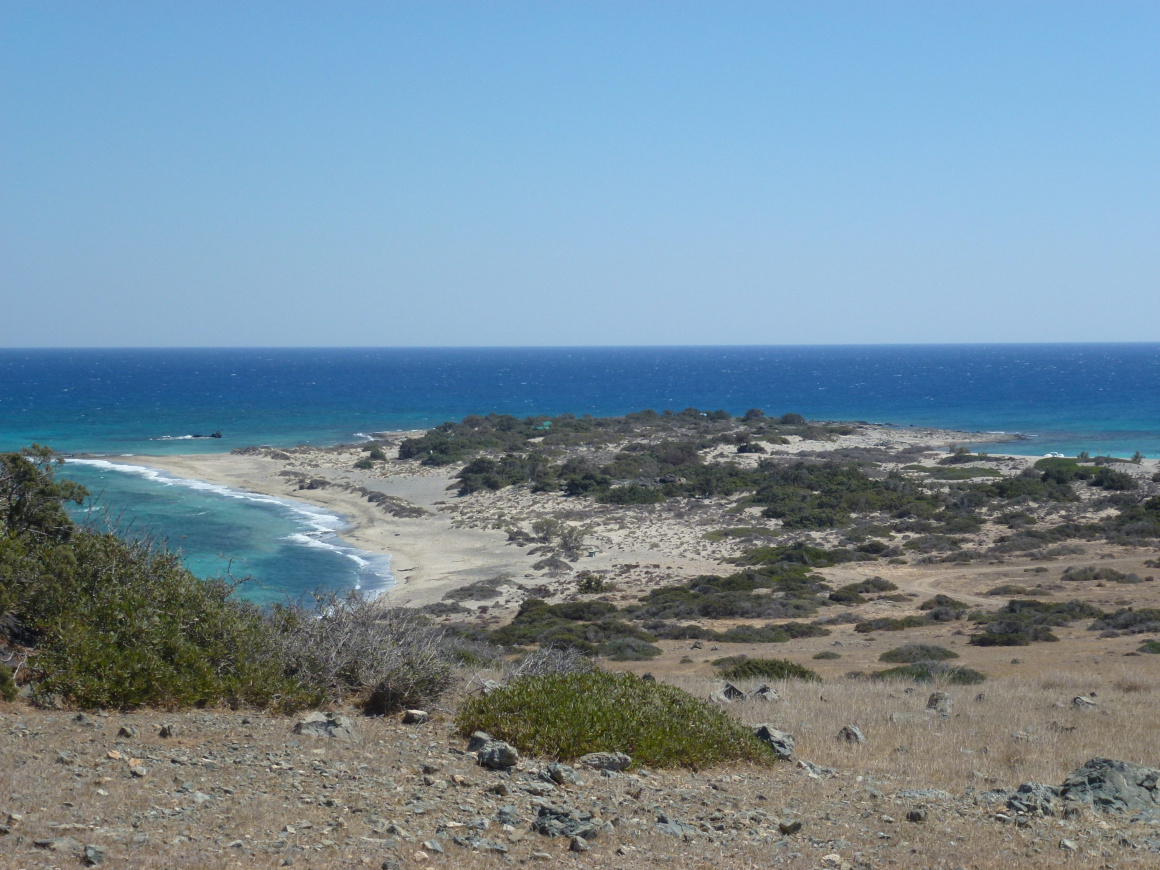Introduction
Some 15 kilometers off Crete's southern coast lies a little speck of land surrounded by Libyan Blue – Chrissi Island (also spelled Chrysi). The name “Chrissi” means Golden, and the island indeed boasts a golden shoreline unlike any other in Crete. Often referred to as the “Libyan Island” or “Donkey Island” by locals, Chrissi is a protected natural paradise known for its powdery white sand tinted with millions of tiny seashells, shallow turquoise waters, and an ethereal cedar forest that blankets its interior. Stepping onto Chrissi, you might think you've been whisked away to the Caribbean or the Indian Ocean; it's that surreal. There are no towns, no cars, virtually no permanent residents – just a small abandoned chapel, a lighthouse, and nature's splendor all around. It's the kind of place where you leave footprints in the sand and nothing else.
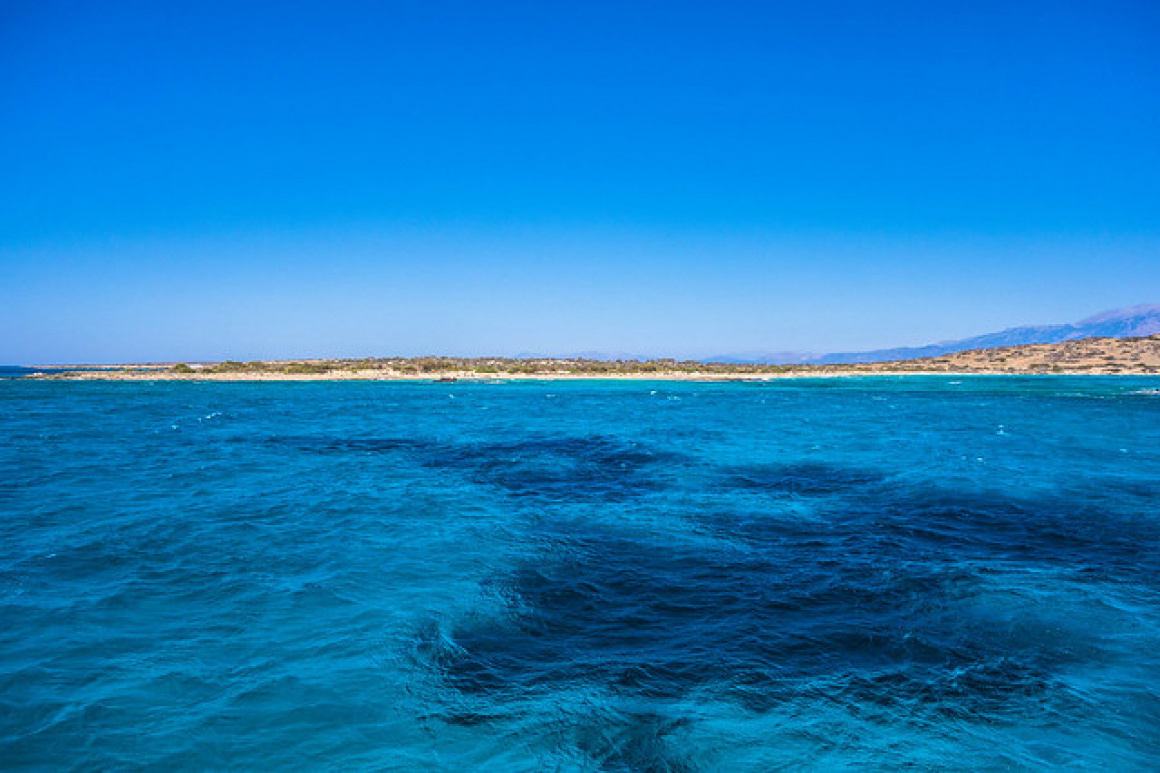
 'Chrissi Island Crete' - Attribution: togwithbob
'Chrissi Island Crete' - Attribution: togwithbobFor years, Chrissi was one of Crete's best-kept secrets – a hidden gem for day-trippers seeking an escape from the ordinary. In recent times it gained popularity, and with that came challenges of preservation. But efforts have been made to keep Chrissi as pristine as possible. Visiting Chrissi Island is an experience of utter relaxation and communion with nature, tempered with the responsibility we all have to tread lightly on this fragile Eden.
A Pristine Paradise (and How to Reach It)
Chrissi is accessible only by boat, typically from the town of Ierapetra on Crete's south coast. Ierapetra, known as the southernmost town in Europe, runs daily excursion boats to the island during the summer season (usually May through October). The boat ride takes about 50–60 minutes. As you approach Chrissi, you'll notice its astonishing water color – a band of bright aquamarine surrounds the island thanks to the white sand beneath. The boat docks at the south side of Chrissi, at a small pier on Vougiou Mati Bay. This side has relatively calm waters and a pebblier shore.
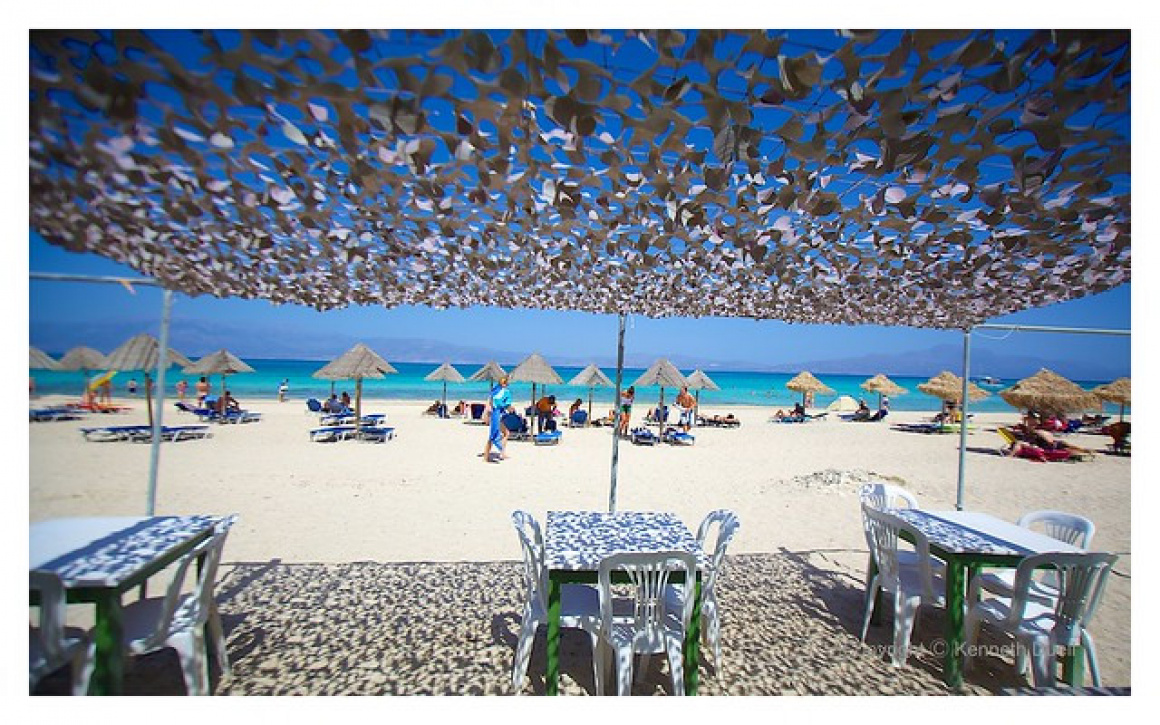
 'A day at the beach' - Attribution: Squidlover
'A day at the beach' - Attribution: SquidloverFrom the landing, a wooden boardwalk and path lead north through the heart of the island (a flat walk of about 10 minutes) to the main attraction: Golden Beach, or “Belegrina,” on the north shore. The walk itself is lovely – you traverse the cedar forest on a marked trail. Gnarled Lebanon cedars (which are actually more akin to junipers, some over 200 years old) create a unique canopy. Their twisted trunks and branches stand sculpted by sea winds, and their roots form an intricate network to stabilize the sand. It's quiet, except for the crunch of sand underfoot and distant gull cries.

 'Chrissi Island, Crete' - Attribution: Robert Gabriel M
'Chrissi Island, Crete' - Attribution: Robert Gabriel MSuddenly, you emerge onto Golden Beach, and the sight can take your breath away. Golden-white sands stretch out, and the water is an otherworldly clear blue-green. The color is so vivid that it reflects onto the undersides of passing clouds. The beach is scattered with tiny shell fragments that glint in the sun, giving it that golden hue. In some spots, you can actually scoop up handfuls of sand and see little pink and purple shells (though note, do not take them with you – removing shells or sand is strictly prohibited to protect the ecosystem).
The sea around Chrissi is very shallow and calm – you can wade out dozens of meters and still be just waist-deep in crystal water. This makes it perfect for floating, snorkeling (though marine life is modest, mainly some small fish and sea urchins around rocks), or just reclining in the water as if it were a big natural swimming pool. There are few places in Crete where the sea is as warm and gentle as Chrissi's north coast in peak summer.
Because the island is uninhabited, keep in mind facilities are extremely limited:
- There are no built hotels, no standard restaurants. In past years, some seasonal cantinas would pop up near Golden Beach selling basic refreshments, but recently due to stricter rules, there might be none. Be prepared with your own water, snacks, and shade (more on that in a moment).
- There are no loungers or umbrellas officially. People bring their own umbrellas or find natural shade under trees near the shore.
- There are no regular toilets or showers (aside from perhaps a portable chemical toilet near the landing point during high season).
Essentially, Chrissi is a day excursion where you must carry all essentials and take all waste back.
The typical day-tripper scenario is: you catch a morning boat (around 10:30 or 11:00 from Ierapetra), arrive late morning on Chrissi, spend around 4–5 hours enjoying the beach, then catch the return boat around 4:00 PM. This gives you plenty of time to swim and sunbathe.
However, due to its fragile environment, Greek authorities have recently restricted access to Chrissi's interior. In fact, for the 2022 and 2023 seasons, disembarkation on the island itself was heavily limited – boats would anchor nearby, allowing swimming off the boat, but not full access on land. This came after record tourist numbers (~200,000 annually) threatened the cedar forest's health. At the time of writing, landings were to be monitored or temporarily halted to allow the ecosystem to recover. For 2024, it was planned that from May to October, visitors may be prohibited from stepping on the island's interior, with only swimming allowed offshore. These measures indicate how important conservation is for Chrissi.
Thus, check ahead about the current status: as of now, some tours let people on the beach for limited time but not wandering freely. Even if you can step ashore, expect that certain areas (like deeper parts of the forest) will be off-limits to protect the cedars. Always obey posted rules or instructions by rangers on-site.
Exploring Chrissi (Respectfully)
If allowed on land, the main thing to do on Chrissi is enjoy the beaches. Golden Beach (north side) is the most famous and usually the busiest – you'll see most people plop down here upon arrival. If you desire a more tranquil spot, you can walk a bit east or west along the north shore to find semi-secluded coves.
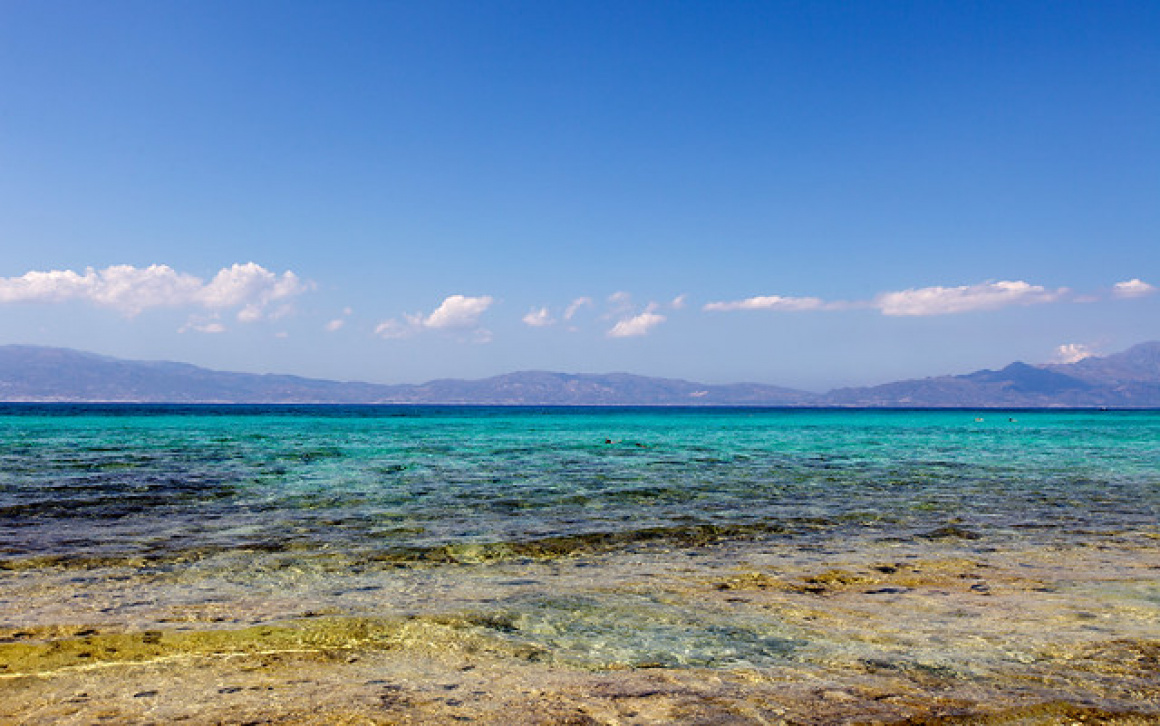
 'Golden Beach (View of Crete)' - Attribution: Trouvaille Blue
'Golden Beach (View of Crete)' - Attribution: Trouvaille BlueTo the east, Golden Beach continues into a beach called Vages. It's equally beautiful and often slightly less crowded, especially as you go farther. Historically, the eastern tip beyond Vages, known as Kataprosopo, was popular with naturists (nudists), as Chrissi has been a nudist-friendly destination unofficially. If you seek that, just ensure you're away from the main family areas.
On the west end of Golden Beach, past some rocky areas, lies Hatzivolakas beach. This has a mix of sand and flat rocks and is usually quiet – here you'll also find interesting fossilized shells in the rocks. The cedar forest behind Hatzivolakas is dense and some ancient big trees are near the shore, offering pockets of shade.
In the interior near Hatzivolakas, there is a small chapel of Agios Nikolaos (Saint Nicholas), dating probably from the early 19th century, and near it an old salt pan (where islanders historically collected salt). There's also a simple lighthouse/lookout on a low hill on the northwest part of the isle – from there on a clear day you can see Ierapetra and even to the high peaks of eastern Crete.
The cedar forest itself is special. Chrissi hosts one of the largest naturally occurring Lebanon cedar forests in Europe. The trees are shorter than typical cedars (owing to winds and limited freshwater), but they form a canopy over much of the island's center. When walking the designated paths, you'll notice the ground is carpeted in fallen dry needles, and the air has a woody, piney fragrance mixed with sea salt. It feels almost like a tropical pine forest. Given how unique this habitat is (with many endemic plants and even some rare lizards and migratory birds), it's vital to stay on paths and not disturb it. In the heart of the forest, it's cooler and you'll hear the constant rasp of cicadas in summer.
Important: Do not attempt to camp or stay overnight on Chrissi. It's been officially banned to protect the island. There are no accommodation facilities and no legal camping. All visitors must leave by the last boat in the afternoon.
Environmental Guidelines
Chrissi Island is under the Natura 2000 protection and has been declared a wildlife refuge. Visitors should be extremely mindful of these rules:
- Take nothing but photos, leave nothing but footprints – and even footprints, try to keep on established paths or the beach. Removing shells, sand, rocks, wood – anything – is illegal.
- No fires, no smoking in forested areas. With so much dry vegetation, fire is a huge risk.
- No littering – absolutely crucial on an isolated island. Even biodegradable waste like fruit peels should be taken back with you (it can attract rats or disrupt soil).
- If facilities like a beach bar or toilets are absent, be prepared to be self-sufficient and carry waste (even micro-waste like cigarette butts – don't leave them in the sand).
- Respect any cordoned off areas. Parts of the cedar woods may be roped off to let vegetation recover.
Due to overvisitation, authorities as mentioned have limited disembarkation. At times, boats might only allow swim stops – meaning you can swim off the boat near shore but not actually go roam the beach. While that's a bummer for hikers, it shows how delicate Chrissi is. If that's the case during your visit, you'll still enjoy the incredibly clear waters and see the beauty from the boat, but you won't be picnicking under the cedars.
When to Visit Chrissi
Summer is the only practical season – roughly mid-May to early October – because that's when boats run and weather permits. July and August have the most boats (several per day) and thus the most crowds. Even so, Chrissi's beaches are big enough to find a spot.
If you can choose, June or September are ideal: slightly fewer visitors, slightly cooler temps (August can be scorchingly hot, with limited shade on island). Also, in September the sea is at its warmest after all summer sun.
Try to board the first boat of the day to enjoy a couple of hours before the rush. Likewise, on the island, consider spending some time on the south side beach (where the boat lands, often called Vougiou Mati) at peak hours when north is busy, then moving back north later when people start heading to the boat.
Sun exposure: Chrissi can feel hotter than mainland because there's no high terrain for shade except the sparse trees. Bring a sun umbrella or beach tent if you have, or at least a hat and high SPF sunscreen. Many a visitor gets sunburnt because the cooling effect of water and breeze makes them forget how strong the sun is. The sand also reflects sun upward.
Unique Island Features and Tips
Pink Sand: Similar to Elafonisi Beach in western Crete, Chrissi's sand in some areas has a pinkish tint due to crushed shells (foraminifera). It's most noticeable at the waterline and in little dunes. It gives a dreamy quality to the shoreline in photos.

 'get up! summer is here!!' - Attribution: Anna Galanou
'get up! summer is here!!' - Attribution: Anna GalanouUnderwater: Bring a snorkel mask if you like. The shallows are mostly sandy, but near rocks you can observe small fish (wrasse, damselfish) and sometimes larger fish feeding on the sea floor. There are also many pretty shells and hermit crabs scuttling about. Just watch out for sea urchins on rocks – wear swim shoes if you explore rocky pools.
Sound of silence: Because there are no vehicles or machines (aside from a generator hum at maybe a ranger station), Chrissi can be eerily quiet. Once visitors spread out, you mainly hear wind and waves. It's incredibly tranquil. Don't be the person who brings loud music to disturb that – better to soak in the natural soundtrack.
Wildlife: Besides the fish and perhaps a glimpse of a shy wild rabbit or goat, you might see migratory birds resting here. In spring or fall, flocks of European bee-eaters, vibrant in color, sometimes stop on Chrissi. Also, the shallow waters are a nursery for some fish species – little sand eels, etc. If lucky, you might even spot a sea turtle en route to Chrissi; they sometimes swim these waters.
Donkeys? The nickname “Donkey Island” came because locals used to bring their unwanted donkeys to live out their days on Chrissi decades ago. It's said a population of feral donkeys once lived here. Today, it's unlikely you'll encounter any donkeys, but the moniker persists.
Responsible Enjoyment
Chrissi is a gift of nature – treat it as such. The recent restrictions on landing are a clear message: we either love this island wisely, or we lose what makes it special. Enjoy the sense of escape – no civilization in sight, just you on a sandbank in the middle of the sea. It's a rare feeling in our modern world. Some travelers say Chrissi was the highlight of their Crete trip precisely because of that raw natural beauty and simplicity.
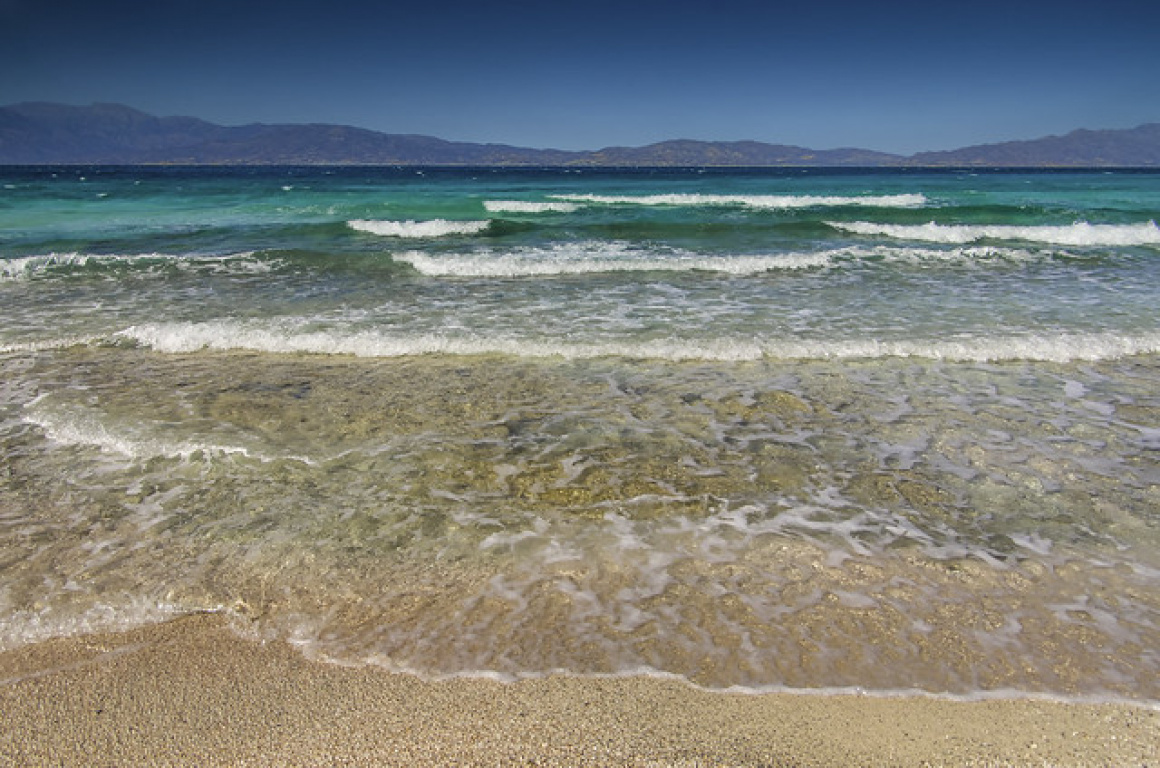
 'Comes And Goes' - Attribution: Vitalis Gerin
'Comes And Goes' - Attribution: Vitalis GerinIf you do land, by the end of the day, you'll board the boat with salty skin, perhaps a little tired from swimming and sun, and undoubtedly relaxed. Many describe drifting into a nap on the return boat, with the sound of Greek music softly playing and a warm breeze, as one of their favorite memories. When you see Ierapetra's harbor reappear, you'll re-enter the “real” world, but carry with you the memory of golden sands and teal waters.
Chrissi captured your love for secluded islands? Crete has more – though none tropical like Chrissi – you might consider a trip to Gavdos, the southernmost European island. For other extraordinary beaches, see Preveli Palm Beach with its river oasis, or Elafonisi Lagoon in our Best Beaches guide. And if you're exploring eastern Crete, don't forget to check out Zakros Palace for a dose of history after all that beach bliss.
Recommended Base: Ierapetra
To visit Chrissi, you'll likely pass through or stay in Ierapetra. This small city isn't as touristy as northern Crete, but has its charms. It's known as the sunniest town in Greece and has a pretty seafront with a Venetian-Ottoman fortress, cute old quarter alleys, and some excellent tavernas. If you need a place to stay:
- Astron Hotel – A modern hotel right on the seafront, convenient for the boat pier (5 minutes walk). Comfortable rooms, some with sea view balconies.
- Cretan Villa – Set in a traditional building in the old town, it offers cozy, authentically decorated rooms around a courtyard. A nice local vibe and very friendly hosts.
- Enorme Santanna Beach – If you prefer a resort, this one is just outside Ierapetra (short taxi ride from port). With a chic design and pool by the beach, it's perfect to unwind after a day of exploration.
Ierapetra has frequent buses from Heraklion (about 2 hours) and Agios Nikolaos (1 hour), so it's reachable even without a car.
In town, don't miss trying the local specialty kishnos, a type of dried fish, at a seafood taverna. And an evening stroll on the promenade, with a scoop of ice cream or a galaktoboureko (custard phyllo pastry) from a bakery, is a sweet way to end a Chrissi excursion day.

